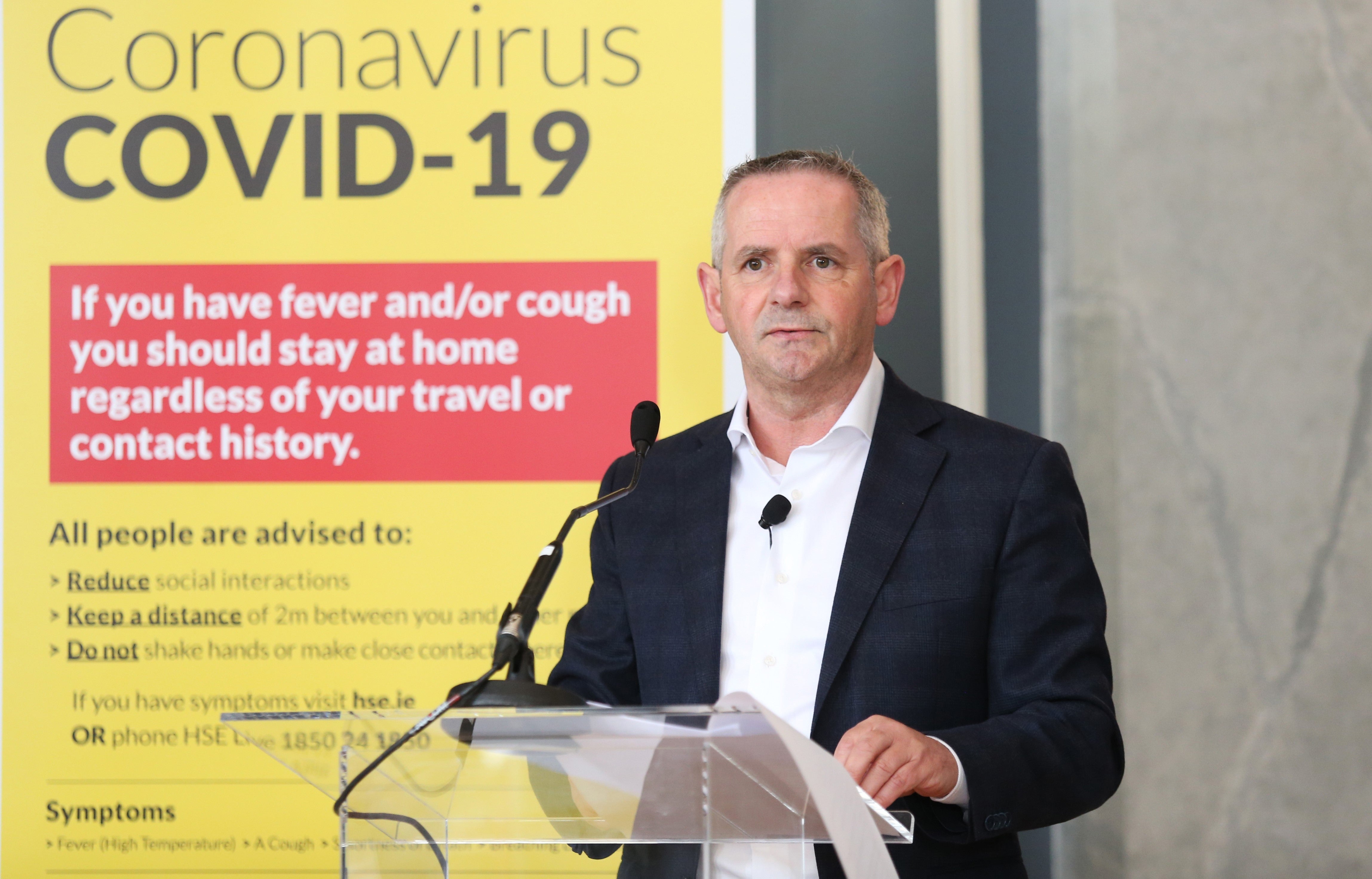At least 8,500 healthcare staff absent due to Covid, says HSE chief
Paul Reid said the ‘pace and force’ of the Omicron variant had had a huge impact on staffing in the health system.

Your support helps us to tell the story
From reproductive rights to climate change to Big Tech, The Independent is on the ground when the story is developing. Whether it's investigating the financials of Elon Musk's pro-Trump PAC or producing our latest documentary, 'The A Word', which shines a light on the American women fighting for reproductive rights, we know how important it is to parse out the facts from the messaging.
At such a critical moment in US history, we need reporters on the ground. Your donation allows us to keep sending journalists to speak to both sides of the story.
The Independent is trusted by Americans across the entire political spectrum. And unlike many other quality news outlets, we choose not to lock Americans out of our reporting and analysis with paywalls. We believe quality journalism should be available to everyone, paid for by those who can afford it.
Your support makes all the difference.An estimated 8,500 healthcare staff are absent because they are sick with Covid-19 or self-isolating, HSE chief executive Paul Reid has said.
But he warned the figure could be double, as it was based on a manual count that was now a week old.
Mr Reid said the “pace and force” of the Omicron variant had had a huge impact on the health system, with 3,000 nurses and midwives, 1,500 patient care staff and 1,500 health and social care workers absent as a result.
Our judgment on it is that it could be at least a 12.5% impact on staffing levels, and it could be even double the number that we're reporting on today
He said it was a “real frontline impact”, representing about 12.5% of healthcare staff.
Speaking at a briefing on Thursday, he said: “There’s at least 8,500 people, our staff, that we have got a manual return on.
“However, I would certainly qualify that figure to say that, our sense of it is, firstly that it is looking back a week, and we do know the acceleration we saw in the period of that week.
“To give examples, some healthcare settings went from 60 staff out to over 300 people out, during the course of this week.
“Some people had a very low level of staff out, and all of a sudden had 300 people out in community services.
“Our judgment on it is that it could be at least a 12.5% impact on staffing levels, and it could be even double the number that we’re reporting on today.”
Mr Reid said the level of absences were “very significant” compared to those witnessed in January 2021.
He added: “What’s been particularly impactful has been a pace and the force of it.
“It happens so quickly, (it’s) so impactful. We would of course hope that we will begin to see many people coming back from the various isolation periods.
“But equally we still haven’t seen the tap turned off, in terms of people and staff being impacted.”
Meanwhile, up to 150,000 positive cases of Covid-19 could not be counted over the last month, due to high positivity levels of up to 60%, a lack of available testing and the highly transmissible Omicron variant.
Mr Reid said: “There’s no doubt that we haven’t seen the total volume that we’re seeing.
It may well be that for every case we're picking up, there will be one or possibly two more cases out there. Either through people who are not symptomatic, or for any other reason they have not been picked up on
“There’s much more than what we’re seeing coming through in our daily published cases. Absolutely, no doubt.
“When you see a 60% positivity level in the community, you can make all these assumptions about what the volume is.
“I don’t think there’s a definitive figure. There’s some indications in terms of the modelling that it could be in the range of that 150,000 figure that has been communicated.”
HSE chief clinical officer Dr Colm Henry said: “It may well be that for every case we’re picking up, there will be one or possibly two more cases out there.
“Either through people who are not symptomatic, or for any other reason they have not been picked up on.
“This has happened before and that’s why the focus shifts when we get to this level, on that mitigation, on the individual responses that people must make, with or without tests.
“The test is never, never intended to be an end in itself.
“What it does is, it triggers and provokes a public health response in terms of isolation, contacts, and breaking the chain of transmission of the disease.
“Hence the advice at this point in time is, with or without a test, if you have symptoms, to self-isolate.
“Obviously get a test if you can. But you need to self-isolate until you’re at least 48 hours out of your symptoms.
“That focus in a population will break that transmission, not testing alone.”